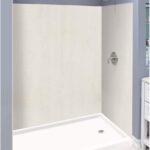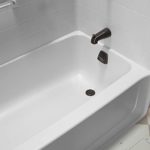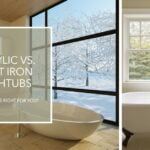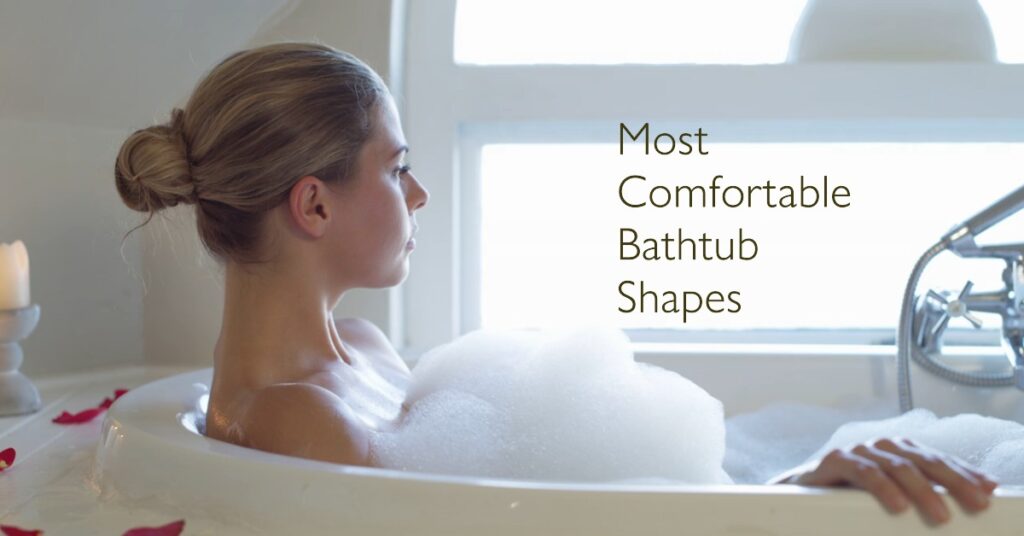
Taking a nice, relaxing bath after a long day is a great way to unwind and destress. But with so many bathtub shapes to choose from, it can be overwhelming to find the one that’s right for you. This article will explore the most comfortable bathtub shapes and their pros and cons to help you make an informed decision.
Quick Comparison of Bathtub Shapes
| Bath Shape | Pros | Cons |
|---|---|---|
| Freestanding | – Versatile in terms of placement within a bathroom – Wide range of materials and styles available – Can add a luxurious and stylish element to a bathroom – Deeper and longer than traditional built-in bathtubs, providing a more immersive and relaxing bathing experience | – More expensive than traditional built-in bathtubs – May require additional plumbing work for installation – Limited space for showering and storing bathroom essentials – Can be difficult to clean and maintain, especially in hard-to-reach areas around the tub |
| Walk-In | – Provides easy access for people with limited mobility or disabilities – Can be equipped with safety features such as grab bars and non-slip surfaces – Allows for soaking without having to climb over high bathtub walls | – Typically more expensive than traditional built-in bathtubs – May require additional plumbing work for installation – Limited space for showering and storing bathroom essentials – Can take longer to fill and drain compared to traditional bathtubs |
| Japanese Soaking | – Compact and space-saving – Provides a deep and immersive soaking experience – Typically made with high-quality materials such as cedar or hinoki wood | – May be too small for taller individuals or those who prefer a more spacious bathing experience – Can be more expensive than traditional built-in bathtubs |
| Oval | – Sleek and modern design – Provides a spacious and comfortable bathing experience | – May require more space in a bathroom compared to other bath shapes |
| Round | – Unique and eye-catching design – Can fit in smaller spaces compared to other bath shapes | – May not provide as much space for soaking compared to other bath shapes – Can be difficult to find accessories or fixtures that fit with a round shape |
| Slipper | – Provides a comfortable and relaxing reclining position – Can add a luxurious and stylish element to a bathroom | – May not provide as much space for soaking compared to other bath shapes – Limited space for showering and storing bathroom essentials – May be more expensive than traditional built-in bathtubs |
| Square | – Space-saving and efficient use of bathroom space – Can fit into corners or against walls – Provides a spacious and comfortable bathing experience | – Limited range of styles and materials available compared to other bath shapes |
| Rectangular | – Provides a spacious and comfortable bathing experience – Wide range of materials and styles available | – May require more space in a bathroom compared to other bath shapes – Limited range of shapes available compared to other bath shapes |
The Ultimate Guide to Finding the Best Cast Iron Bathtub: Discover everything you need to know about cast iron bathtubs with our comprehensive guide. From materials to styles and features, we’ll help you choose the perfect tub for your home.
1. Alcove Bathtubs
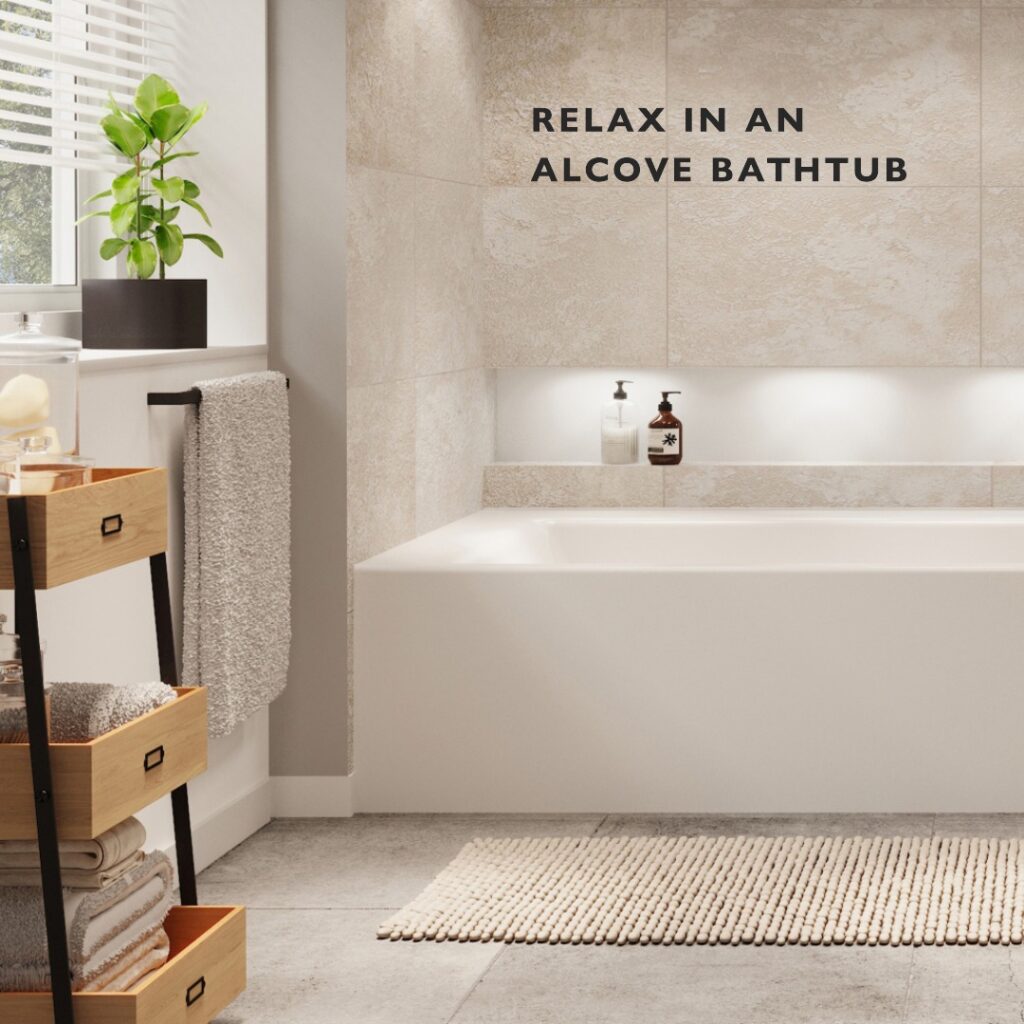
Alcove tubs are the most common and traditional type of bathtub. They are designed to fit into a three-walled enclosure, with the fourth side finished with a bathtub apron. Alcove tubs are available in a variety of sizes, styles, and materials.
Pros
- Affordable and widely available
- Easy to install
- Space-efficient design
- Suitable for smaller bathrooms
- Can be used for showering as well
Cons
- Limited design options
- May not be as comfortable as other shapes
- Can be difficult to clean the back and sides of the tub due to the enclosure
Alcove tubs are a popular choice for homeowners due to their affordability, ease of installation, and space-saving design. They are also a practical option for smaller bathrooms where space is limited. However, they may not be the most comfortable option for soaking due to their narrow design. Additionally, cleaning the back and sides of the tub can be challenging because of the enclosure. Overall, alcove tubs are a great choice for those looking for a practical and affordable bathtub option.
Acrylic vs Steel Tubs: Trying to choose between an acrylic or steel bathtub? Our comparison guide breaks down the pros and cons of each material to help you make an informed decision.
2. Freestanding Bathtubs
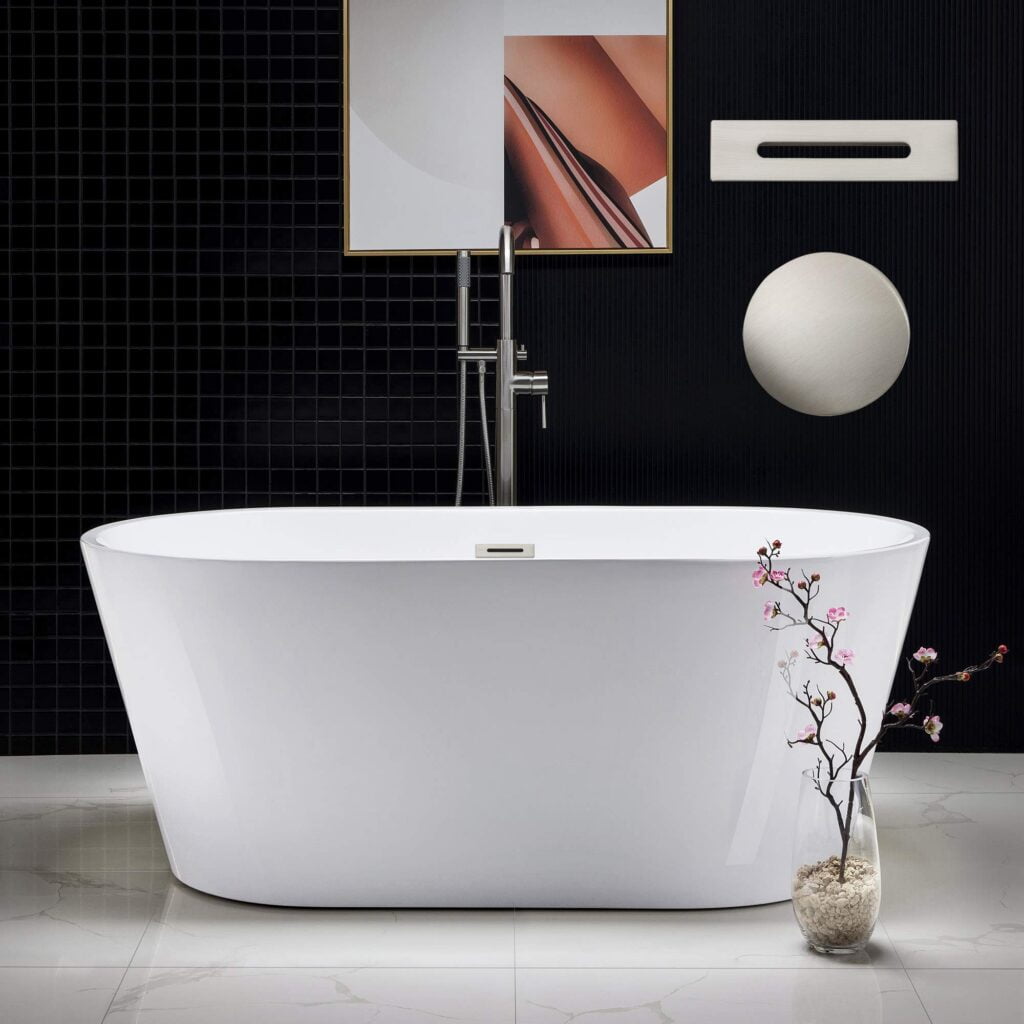
Freestanding bathtubs are standalone tubs that do not require any surrounding walls or structures for installation. They are often considered a luxurious addition to a bathroom and can be found in a variety of styles and materials, including acrylic, cast iron, copper, and stone. Freestanding tubs are typically deeper and longer than traditional built-in bathtubs, providing a more immersive and relaxing bathing experience.
Pros
- Versatile in terms of placement within a bathroom
- Wide range of materials and styles available
- Can add a luxurious and stylish element to a bathroom
- Deeper and longer than traditional built-in bathtubs, providing a more immersive and relaxing bathing experience
Cons
- More expensive than traditional built-in bathtubs
- May require additional plumbing work for installation
- Limited space for showering and storing bathroom essentials
- Can be difficult to clean and maintain, especially in hard-to-reach areas around the tub
Freestanding bathtubs are a great option for those looking to add a touch of luxury and style to their bathroom. They come in a wide range of materials and styles, making it easy to find the perfect fit for any bathroom design. Additionally, freestanding tubs are deeper and longer than traditional built-in bathtubs, providing a more immersive and relaxing bathing experience. However, freestanding tubs are more expensive than traditional built-in bathtubs and may require additional plumbing work for installation. They also have limited space for showering and storing bathroom essentials, and can be difficult to clean and maintain, especially in hard-to-reach areas around the tub.
Pros and Cons of Freestanding Tubs: Thinking of adding a freestanding tub to your bathroom? Our pros and cons guide can help you decide if it’s the right choice for you.
3. Corner Bathtubs
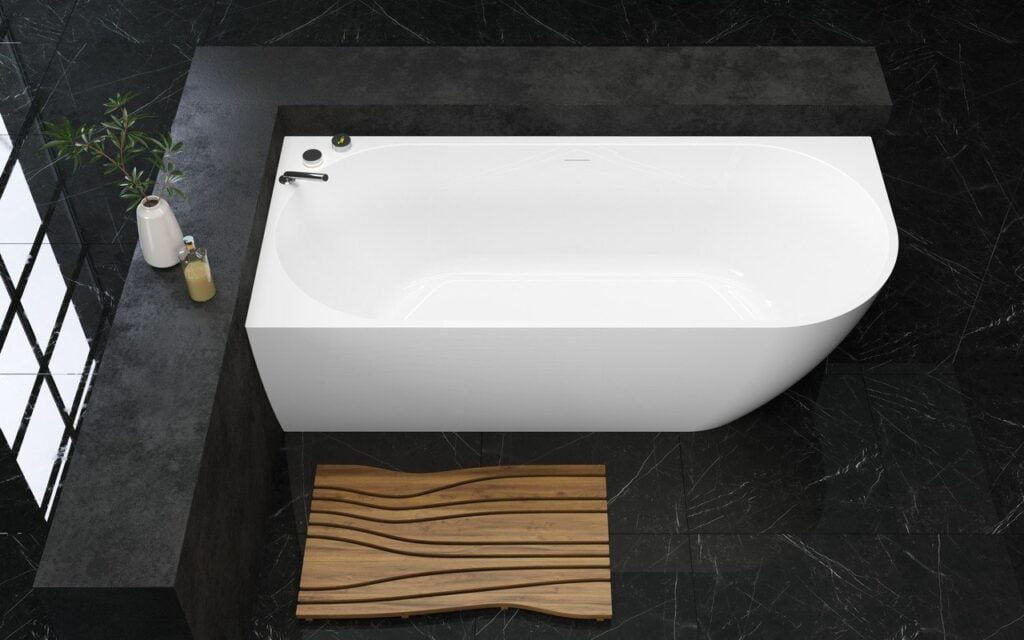
Corner bathtubs are a space-saving option that can add a modern touch to your bathroom. They are installed in the corner of the room and are available in a variety of shapes, including triangular and oval.
Pros
- Space-saving design
- Unique and modern look
- Variety of design options
Cons
- Limited space for movement
- Can be difficult to clean
- Limited design options
Acrylic vs Cast Iron Bathtubs: Can’t decide between an acrylic or cast iron bathtub? Check out our comparison guide to help you make the right choice for your bathroom.
4. Drop-In Bathtubs
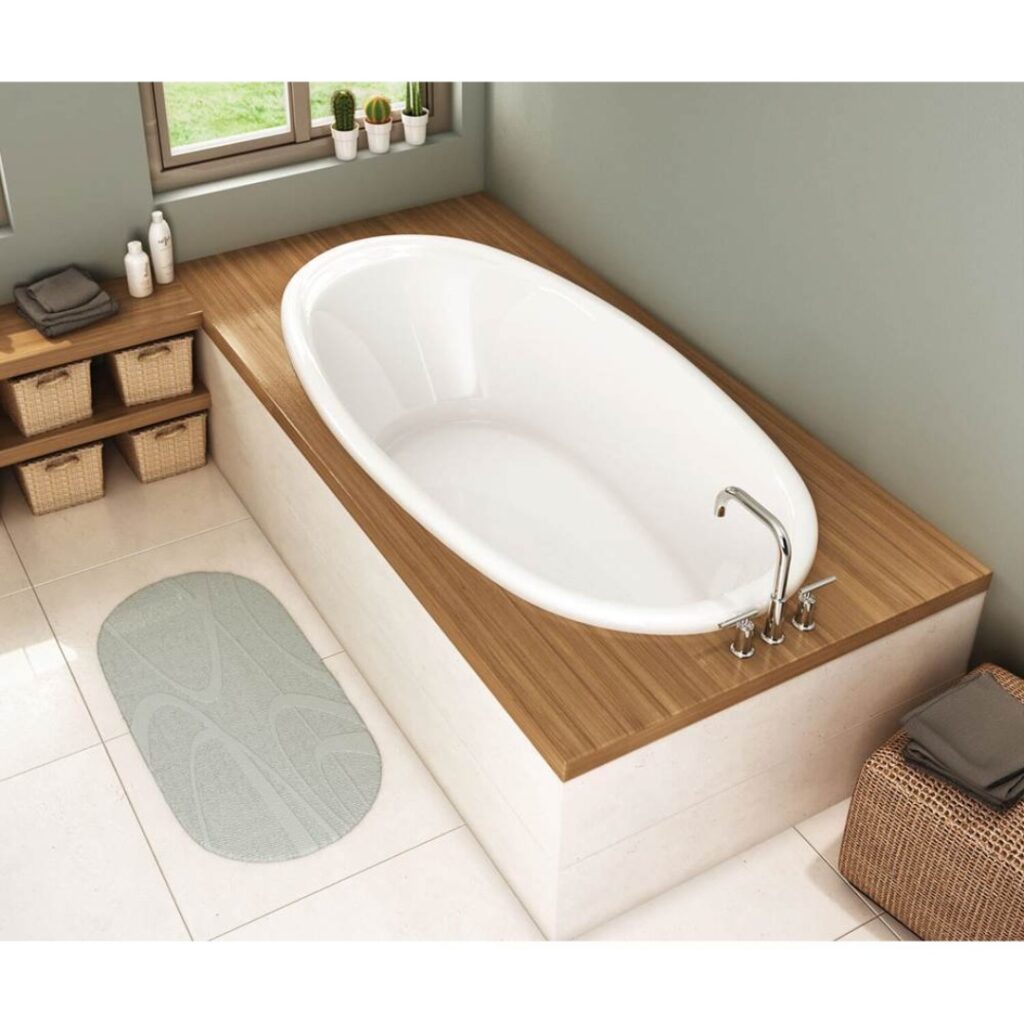
Drop-in bathtubs are installed in a frame or platform and are surrounded by tiles or other materials. They are available in a variety of shapes, including rectangular and oval.
Pros
- Customizable design
- Easy to clean
- Wide variety of design options
Cons
- Require more space
- Difficult to install
- Expensive
5. Walk-In Bathtubs
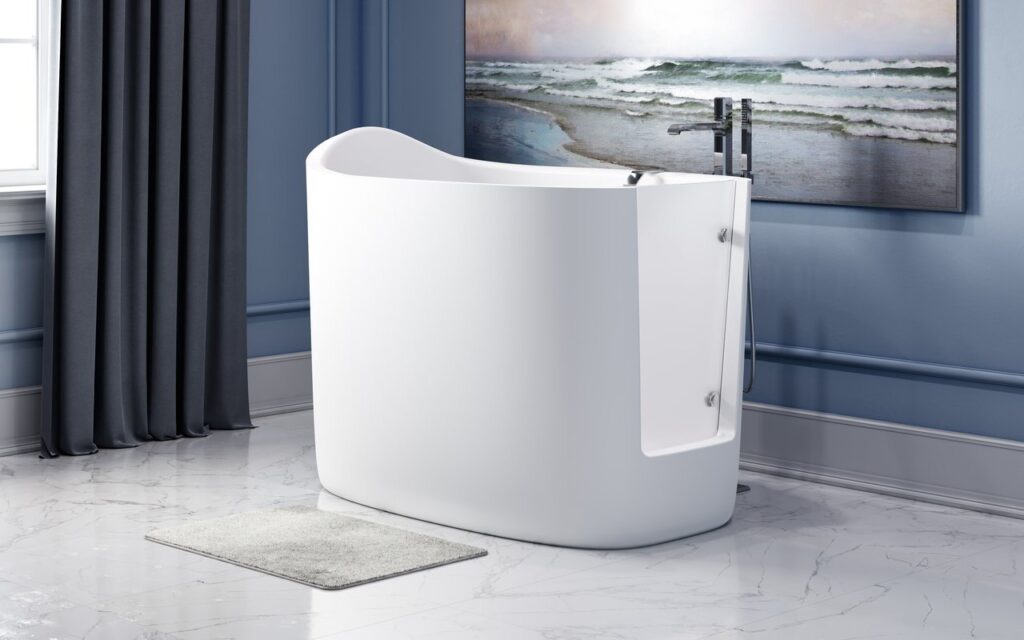
Walk-in bathtubs are designed for people with mobility issues, such as seniors or individuals with disabilities. They feature a door that opens and closes to allow the user to step into the tub safely, without having to climb over the high edge of a traditional bathtub. Walk-in tubs also typically come with built-in seats and grab bars to provide additional support and prevent slipping.
Pros
- Improved safety for people with mobility issues
- Can help alleviate joint and muscle pain through hydrotherapy features, such as whirlpool jets and air jets
- Built-in seat and grab bars for added safety and support
- Variety of sizes and shapes to fit different bathroom layouts
Cons
- Expensive compared to traditional bathtubs
- Takes longer to fill and drain due to the door and the need for a specialized drainage system
- Limited mobility within the tub due to the built-in seat and narrow size
- Requires a larger bathroom space to accommodate the door and proper drainage system
Walk-in bathtubs are a great option for individuals with mobility issues, as they offer a safer way to bathe. They also offer hydrotherapy features, such as whirlpool jets and air jets, which can help alleviate joint and muscle pain. Additionally, they come with built-in seats and grab bars for added safety and support. However, walk-in bathtubs can be more expensive than traditional bathtubs and take longer to fill and drain due to the door and specialized drainage system. They also have limited mobility within the tub due to the built-in seat and narrow size. Finally, walk-in bathtubs require a larger bathroom space to accommodate the door and proper drainage system.
6. Japanese Soaking Tubs
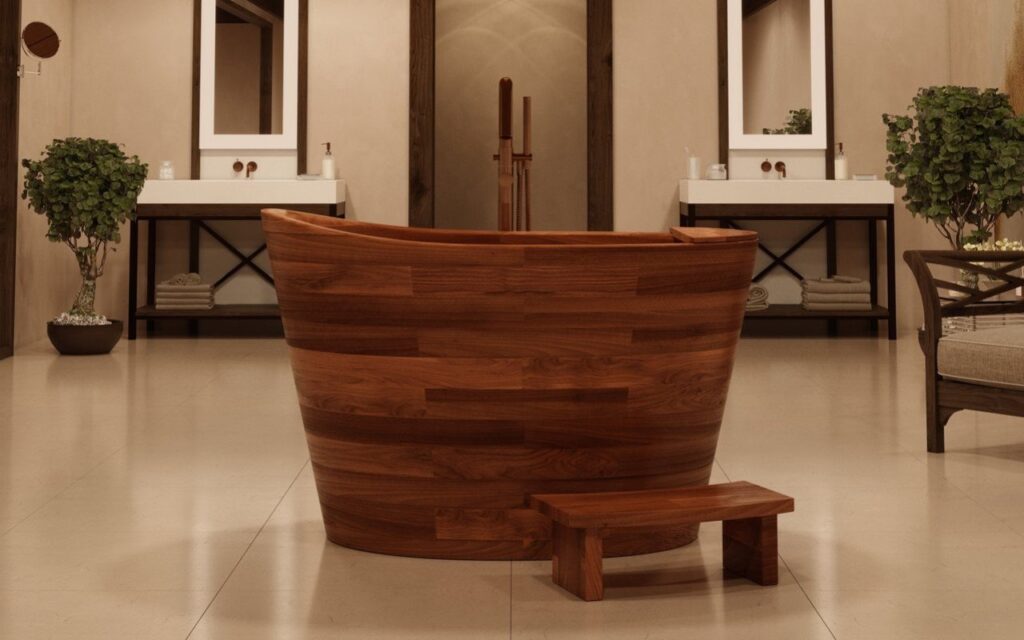
Japanese soaking tubs, also known as ofuro tubs, are deep, rectangular-shaped tubs that originated in Japan. They are designed for a full-body immersion experience, with the water covering the shoulders and even the neck. Japanese soaking tubs are typically made of wood or acrylic and can come in various sizes, from small soaking tubs for one person to larger tubs for two people.
Pros
- Promotes relaxation and stress relief
- Compact and space-saving design
- Aesthetically pleasing and adds a touch of spa-like luxury to the bathroom
- Great for smaller bathrooms
- Retains heat longer than other materials
Cons
- Expensive compared to other types of tubs
- Can require more maintenance due to the use of wood
- May not be suitable for taller people due to the depth
Japanese soaking tubs offer a unique and luxurious soaking experience, promoting relaxation and stress relief. They are also a space-saving option, making them a great choice for smaller bathrooms. They can be made from wood or acrylic, with wood offering a more traditional and aesthetically pleasing look. However, wood may require more maintenance compared to other materials. Japanese soaking tubs are also more expensive than other types of tubs. Additionally, taller people may not find them comfortable due to their depth. Overall, Japanese soaking tubs are a great choice for those looking for a spa-like experience in their own home.
7. Oval Shape Tubs
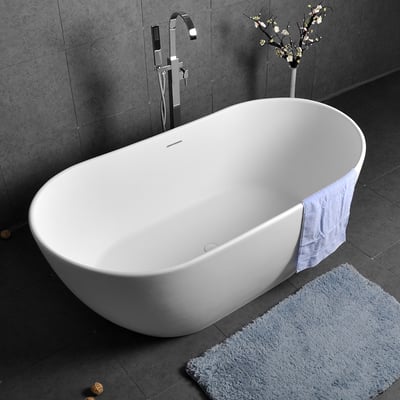
Oval shape tubs are a popular choice for those who want a classic look. They are available in a variety of sizes and can fit in most bathrooms.
Pros
- Classic design
- Comfortable shape for bathing
Cons
- Limited design options
- Can be difficult to clean
Resurfacing Cast Iron Tub: If you’re looking to give your old cast iron tub a makeover, check out our step-by-step guide to resurfacing. Learn how to transform your tub into a brand new fixture today!
8. Round Shape Tubs
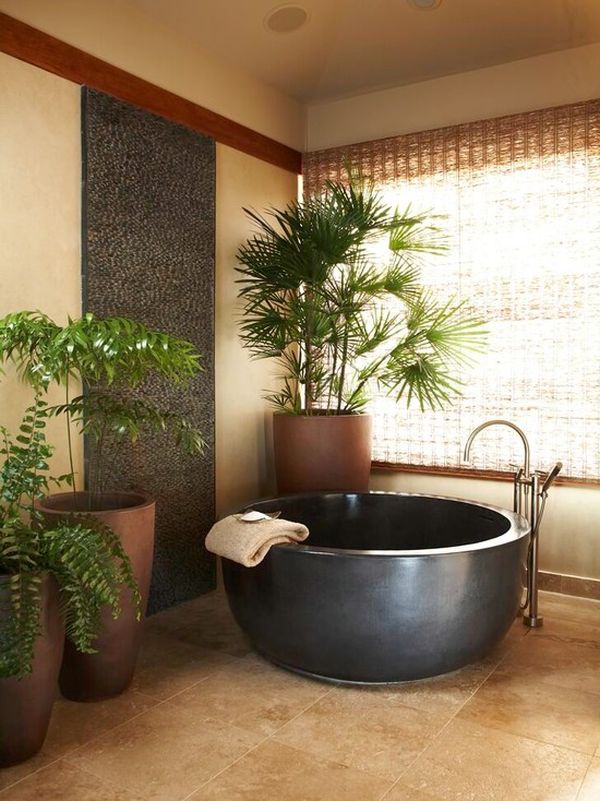
Round shape tubs are a unique option for those who want to add a touch of elegance to their bathroom. They come in various sizes and can be installed as a freestanding or built-in bathtub.
Pros
- Unique and elegant design
- Available in various sizes
- Can be installed as a freestanding or built-in bathtub
Cons
- Limited space for bathing
- May not be as comfortable as other shapes
9. Slipper Shape Tubs
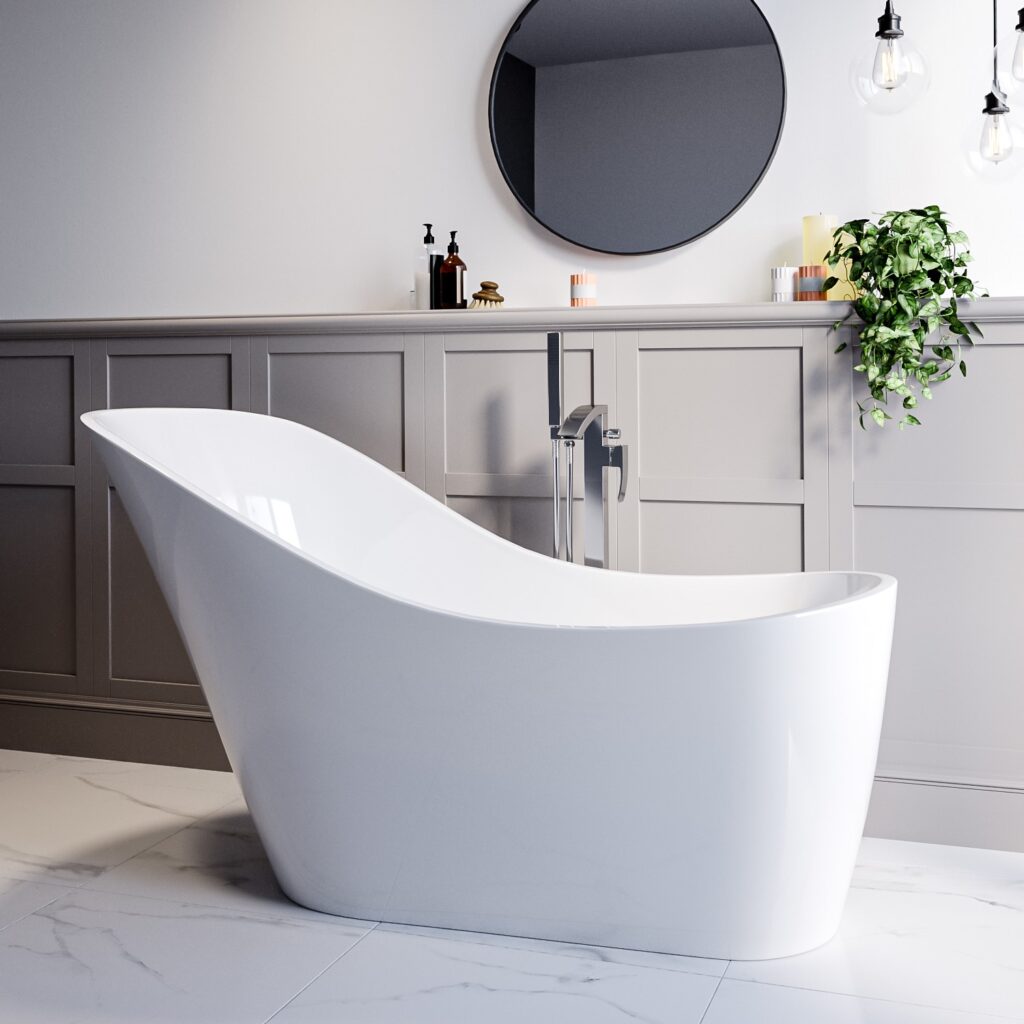
Slipper shape tubs are designed for ultimate comfort and relaxation. They feature a raised backrest on one end, allowing users to recline comfortably. Slipper shape tubs are available in a variety of sizes and shapes.
Pros
- Comfortable design for reclining
- Elegant and luxurious look
- Available in a variety of sizes and shapes
Cons
- More expensive than standard tubs
- Require more space
10. Square Shape Tubs
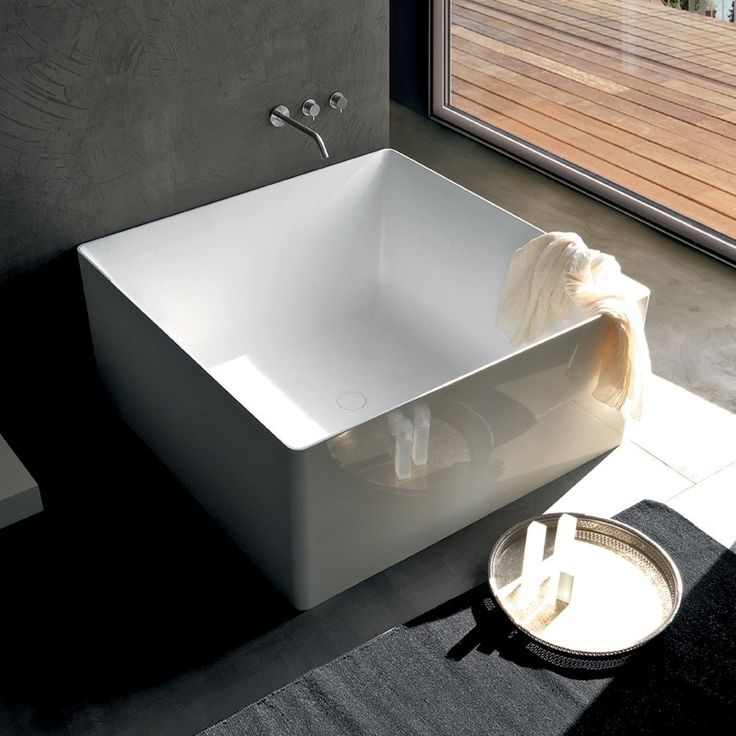
Square shape tubs are a modern and contemporary option that can add a sleek look to your bathroom. They are available in a variety of sizes and can be installed in any bathroom.
Pros
- Modern and contemporary design
- Available in a variety of sizes
- Easy to install
Cons
- Limited design options
- Not as comfortable as other shapes
11. Rectangular Shape Tubs
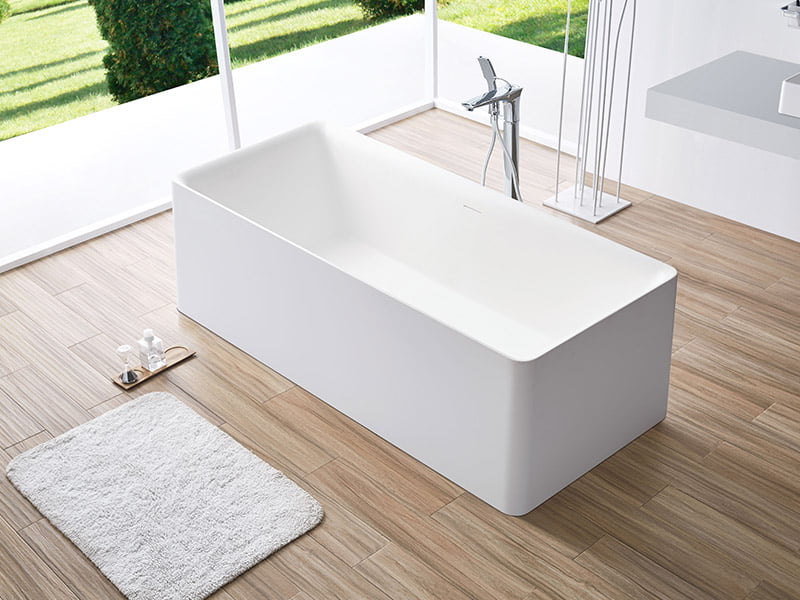
Rectangular shape tubs are a classic and versatile option that can fit into any bathroom design. They are available in a variety of sizes, materials, and styles, from freestanding to drop-in models.
Pros
- Wide range of design options
- Can accommodate two people
- More spacious than other shapes
- Comfortable for soaking
Cons
- May not fit in smaller bathrooms
- Can be difficult to clean the corners and edges
Rectangular shape tubs are a popular choice for those who want a versatile and spacious bathtub option. They are great for soaking and can even accommodate two people. However, their larger size means they may not fit in smaller bathrooms. Additionally, cleaning the corners and edges of the tub can be challenging due to their shape. Nonetheless, rectangular shape tubs are a great choice for those who prioritize comfort and style.
Conclusion
In conclusion, choosing the right bathtub shape for your bathroom is important for both functionality and aesthetics. Each bathtub shape has its pros and cons, and it is up to you to decide which one is best for your needs and preferences. By considering the factors discussed in this article, you can make an informed decision that will result in a comfortable and enjoyable bathing experience.
FAQs
Freestanding bathtubs can be more difficult to clean because they are not attached to any walls, making it harder to reach certain areas.
Yes, walk-in bathtubs are generally more expensive than standard bathtubs due to their specialized design and features.
The slipper shape bathtub is considered one of the most comfortable bathtub shapes due to its raised backrest that allows users to recline comfortably.
Yes, oval shape tubs are available in a variety of sizes and can fit into most bathrooms.
Yes, corner bathtubs are a great space-saving option, especially for smaller bathrooms.


